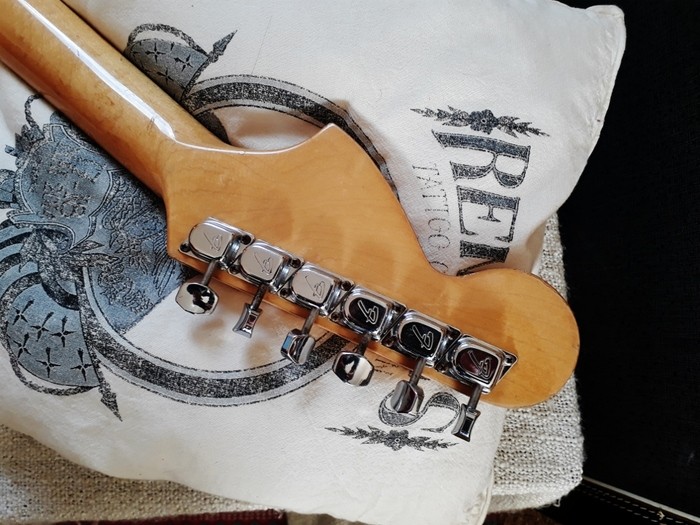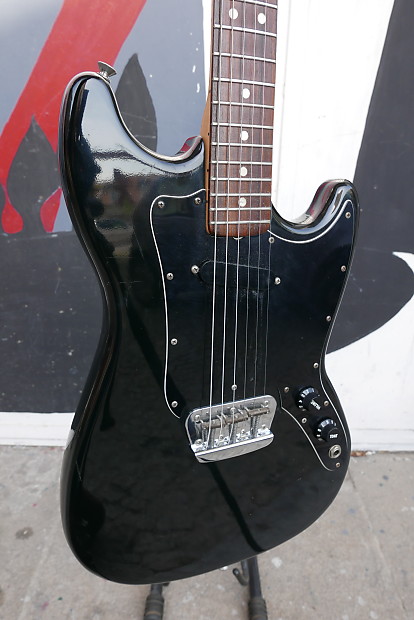


In an attempt to clear the (lacquer-saturated) air on the topic, we offer a look at the custom-color finishes offered by Fender in the ’60s, including an aide for easy reference and a reminder of the debt guitar builders owe to the automotive industry.įrom a guitarmaker’s standpoint, a “custom” finish does not necessarily mean a colorful finish, but rather a non-standard finish on a given model. Regardless of the rationale or reasoning, custom colors are today an essential (and sometimes highly valued) feature of many vintage instruments, though their origins and specificity are not always adequately documented. What better way to make the electric guitar a similar object of desire, symbolizing the dawn of a new era of freedom, innovation, and rising affluence? Guitar makers, competing similarly and becoming ever more savvy, moved to capitalize on the cult of the car (and its many colors). A Lake Placid Blue ambiance dominates the front page of the ’58 Cadillac catalog.

(RIGHT) This 1964 GM chart includes the two Cadillac Firemist shades used (and re-named) by Fender. The Blue Ice and Sherwood Green shades featured in this ’59 Mercury chart are not the colors actually used by Fender. (LEFT) This 1956 Ford color chart lists the famous Fiesta Red (which was not invented by George Fullerton!). Competing furiously, makers offered a broad palette of potential colors to help Neighbor A differentiate his ride from that of Neighbor B. As a result, automakers started to offer their wares in ever-better dress.īeyond plush interiors and dashboards with more dials, switches, and knobs, one of the key elements of the surge in the popularity of the automobile involved its paint. The booming economy of the country’s post-war years pushed the car from a purpose-built means of transportation to the center of family and social life. In the 1950s, America’s fascination with the automobile was running at a fever pitch. This ’56 Buick exhibits a combination of Foam Green and (darker) Laurel Green. Having said this, there are a lot worse guitars out there, and as well as being historically important, the 1820 bass can certainly provide the goods when required.’63 Stratocaster in Candy Apple Red. Over the course of the 70s, the Japanese output improved dramatically, and in many ways these early 70s models are a low point for the brand. These new Epiphones were based on existing Matsumoku guitars, sharing body shapes, and hardware, but the Epiphone line was somewhat upgraded, with inlaid logos and a 2x2 peghead configuration. The Matsumoku factory had been producing guitars for export for some time, but the 1820 bass (alongside a number of guitar models and the 5120 electric acoustic bass) were the first Epiphone models to be made there.
#1964 FENDER MUSICMASTER 2 PICS PLUS#
Other electric models include: HOFNER ELECTRICS: Committee, Verithin 66, Ambassador, President, Senator, Galaxie, HOFNER BASSES: Violin bass, Verithin bass, Senator bass, Professional bass GIBSON ELECTRICS: Barney Kessel, ES-330TD, ES-335TD, ES-345TD, ES-175D, ES-125CD, SG Standard, SG Junior, SG Special GIBSON BASSES: EB-0, EB-2, EB-3 - plus a LOT of acoustics branded Gibson, Hofner, Selmer and Gianniniīy the end of the 1960s, a decision had been made to move Epiphone guitar production from the USA (at the Kalamazoo plant where Gibson guitars were made), to Matsumoto in Japan, creating a line of guitars and basses significantly less expensive than the USA-built models (actually less than half the price). This catalogue saw the (re-)introduction of the late sixties Gibson Les Paul Custom and Les Paul Standard (see page 69) and the short-lived Hofner Club 70. Selmer were the exclusive United Kingdom distributors of Hofner and Gibson at the time, and this catalogue contains a total of 18 electric guitars, 7 bass guitars, 37 acoustics, and 2 Hawaiian guitars - all produced outside the UK and imported by Selmer, with UK prices included in guineas. Scan of 1968/1969 Selmer guitar catalogue (printed July 1968), showing the entire range of electric and acoustic guitars distributed by the company: guitars by Hofner, Gibson, Selmer and Giannini.


 0 kommentar(er)
0 kommentar(er)
